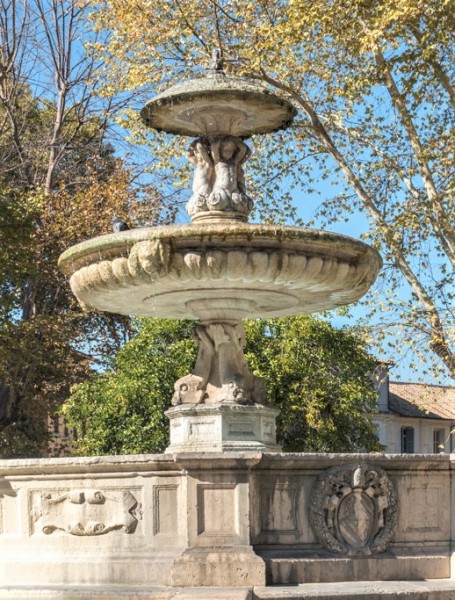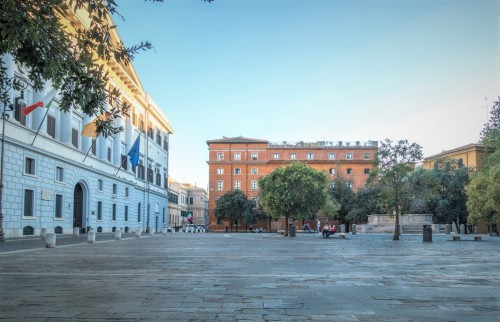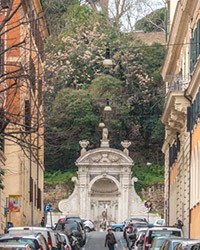
Fontana di Piazza Mastai, fragment

Fontana di Piazza Mastai, fragment

Fontana di Piazza Mastai,Trastevere

Fontana di Piazza Mastai on the Mastai Square, Trastevere

Fontana di Piazza Mastai, Trastevere

Building of the former tobacco factory, Piazza di Mastai

Building of the former tobacco factory, fragment, Piazza di Mastai

Fontana di Piazza Mastai
Walking along the streets of Trastevere, if we sit weary from our trip, on one of the stony benches on the Mastai Square, our eyes will be faced with quite a challenge. Although, we can feel that the fancy fountain, which we have in front of us is not old, similarly to the square itself, it looks like a centuries-old structure in every inch. If this ignorance would make us feel uneasy, it is simply enough to read the inscription found on one of its walls. We can have no doubt – the fountain was not created until 1865.
Walking along the streets of Trastevere, if we sit weary from our trip, on one of the stony benches on the Mastai Square, our eyes will be faced with quite a challenge. Although, we can feel that the fancy fountain, which we have in front of us is not old, similarly to the square itself, it looks like a centuries-old structure in every inch. If this ignorance would make us feel uneasy, it is simply enough to read the inscription found on one of its walls. We can have no doubt – the fountain was not created until 1865.
In 1860 Pope Pius IX built a broad and elegant building which housed a tobacco factory. At the same time one of the bigger urban arrangements of this pope was being implemented, with the aim to modernize and revitalize the Trastevere area. Let us remind ourselves that the district was inhabited by the poor, who however, during the revolt of 1849 acted decisively against the papacy. The factory was a way to ensure employment for the district’s inhabitants, thus making their lives better. In order to build it, it was necessary to demolish the tightly fitting buildings located here, also creating the space for a broad square (Piazza Mastai), which was named after Pope Pius IX (Giovanni Maria Mastai-Ferretti). In the middle, according to the plan, a monumental fountain was to be placed. Besides the dell’Acqua Paola fountain found on Janiculum Hill and another Baroque fountain in front of the Church of Santa Maria in Trastevere, the district had no other fountains.
The design was entrusted to a popular at that time Roman architect Andrea Busiri Vici, who did not put in a great effort. It is difficult to say if he lacked creativity, or he purposefully imitated the well-known throughout the city fountains of the outstanding Giacomo della Porta.
The main basin is situated on an eight-sided pedestal, to which steps lead. Its walls are decorated by papal coats of arms surrounded by wreaths and cartouches with the name of Pius IX and the date of the funding. Out of the water dolphins with intertwined tails emerge, supporting another, this time round basin.
Water flows down it through the jaws of a lion placed on its edge. The next basin, the highest and the smallest is supported by four putti. It is from this basin that water spouts.
Today the fountain looks splendid indeed – renovated, it captivates us with its harmonious shape and the regularly ascending elements. However, that is not what it looked like originally. It was surrounded by not only an iron fence and a closed gate but also by the flowerbeds encircling it. Well, perhaps its decorative function was more valued than the recreational one – workers resting upon its steps would probably not be a welcome sight.
























